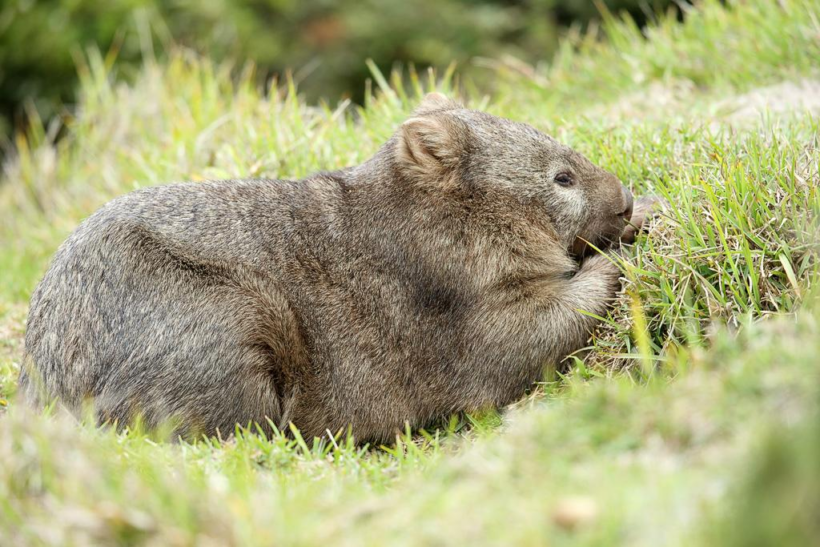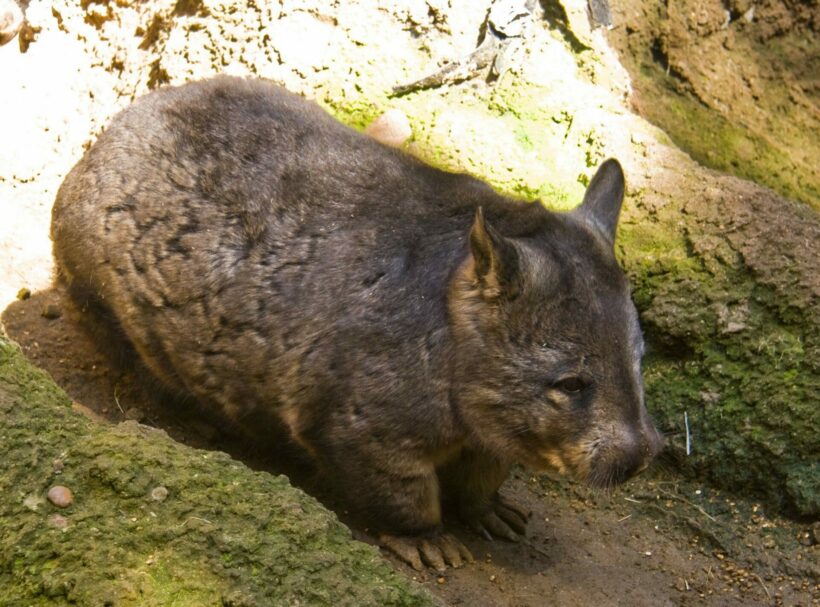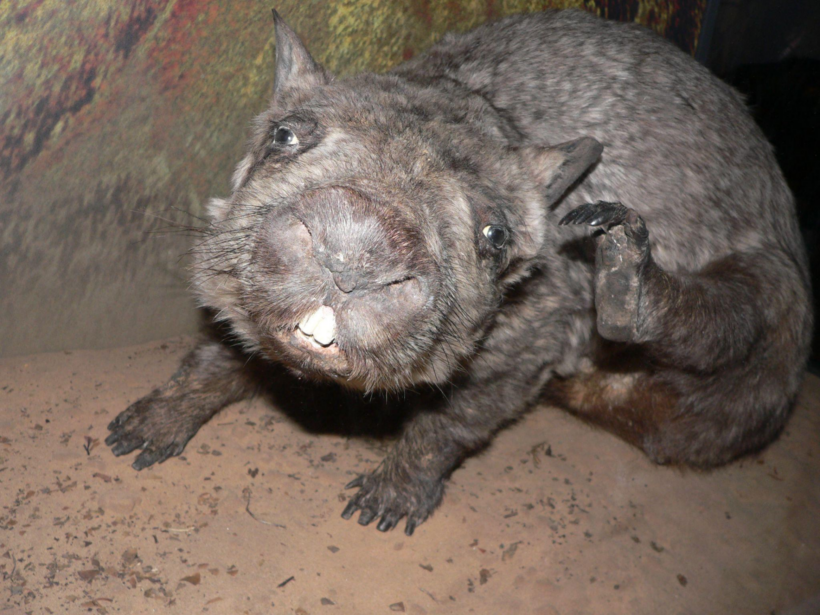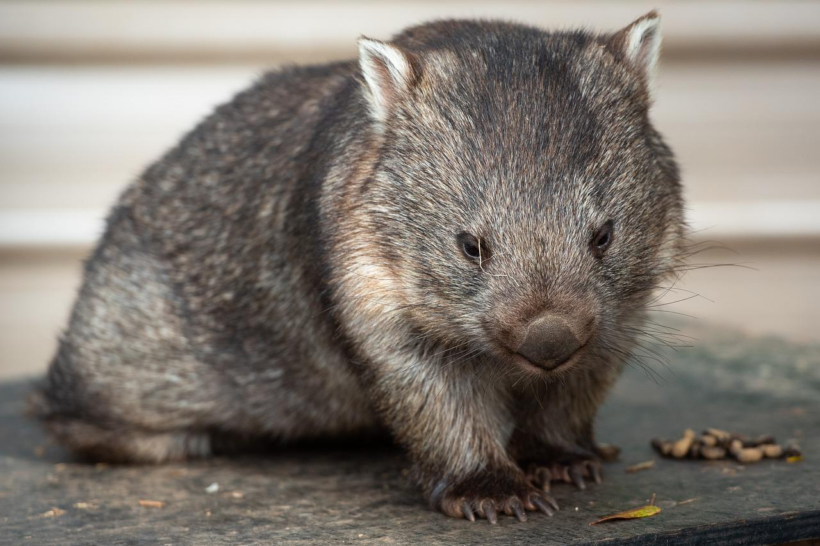by: Assaf Levy, BioDB
Australia, the land of endless horizons and astonishing wildlife, is home to some of the most intriguing creatures on the planet. While kangaroos and koalas often steal the limelight, there’s another bush-dwelling marvel that deserves our attention – the wombat. Picture a furry bulldozer with a heartwarming charm and an underground life that would make even the most skilled miners envious. Today, we’re embarking on an exhilarating journey to uncover the secrets of these remarkable marsupials, from their quirky characteristics to their population status, in a land where “cuteness” and “tenacity” go hand in paw.
Wombats are exclusive to the wondrous continent of Australia. They are primarily found in the southeastern and southern regions, including Tasmania. Within these areas, wombats have adapted to various landscapes, from dense forests to open grasslands. However, they are often associated with rugged terrains, and their ability to thrive in such environments is nothing short of astonishing.
Wombats are known as nature’s bulldozers for good reason. Their robust, sturdy bodies are built for digging, and they are prolific burrowers. The wombat’s burrow called a “warren,” is an underground haven that serves as a refuge from predators and the harsh Australian climate. These burrows can be extensive, with some reaching lengths of up to 100 feet and accommodating several wombats.
One of the wombat’s most interesting features is their rear-facing pouch, a trait shared by all marsupials. When a mother wombat gives birth, her tiny, underdeveloped offspring, no larger than a jellybean, crawl into the pouch for protection and nourishment. As they grow, they continue to seek shelter within the pouch when danger approaches. It’s a cozy and safe space within the wombats’ intricate burrow system.
Get to Know More about Their Characteristics
Wombats are truly fascinating creatures with several unique characteristics that set them apart. These stout and sturdy animals have a robust build, equipped with short legs and a heavy frame that enables them to dig with incredible force. Their adorable appearance is sure to melt anyone’s heart, with their cute, chubby-cheeked faces and small, beady eyes that exude an endearing charm. Covered in a dense fur coat, wombats are well-prepared to stay warm during the cold Australian winters. Their powerful teeth, resembling chisels, never stop growing and are crucial for gnawing through roots, bark, and other vegetation. Primarily nocturnal, wombats showcase their active side during the night, utilizing their excellent sense of smell to navigate in the dark. While not known for their speed, wombats are surprisingly agile and can reach bursts of speed when necessary, often using it as an escape tactic from predators. Typically, wombats have a waddling gait, but they are capable of reaching an impressive speed of 40kph. One of the most peculiar and intriguing facts about wombats is that they produce cube-shaped feces!

Flickr, Common Wombat by Leo | CC BY-NC-SA 2.0 DEED.
Population Status
Wombats have faced their fair share of challenges over the years, particularly due to habitat loss, disease, and vehicle collisions. However, despite these obstacles, they continue to thrive in many parts of Australia.
The common wombat (Vombatus ursinus) has a relatively stable population, and it is listed as a species of “Least Concern” by the International Union for Conservation of Nature (IUCN). Their adaptable nature has allowed them to coexist with human development in some regions.

Flickr, Southern Hairy-nosed Wombat by Jason Pratt | CC BY 2.0 DEED.
The northern hairy-nosed wombat (Lasiorhinus krefftii) and the southern hairy-nosed wombat (Lasiorhinus latifrons), on the other hand, face more significant threats. The northern hairy-nosed wombat is critically endangered, with fewer than 300 individuals remaining. The southern hairy-nosed wombat is classified as near threatened, and conservation efforts are underway to ensure their survival.

Flickr, P1070931 by jade | CC BY-NC-SA 2.0 DEED.
Conservation Efforts
To ensure the wombat’s survival, especially the critically endangered northern hairy-nosed wombat, it is crucial to establish and maintain a suitable habitat that can support their needs. This includes providing sufficient food, water, and shelter and protecting their habitat from threats such as habitat loss, predation, and disease. In addition to habitat conservation, active measures must be taken to breed and maintain genetic diversity within populations, as this is essential for the species’ long-term survival.
To achieve these goals, ongoing research into the ecology and behavior of the wombats is necessary, as it can inform conservation strategies and help identify threats to their survival. Finally, it is important to maintain the necessary infrastructure and equipment to support these conservation efforts, such as fencing, monitoring equipment, and veterinary care facilities.
These fluffy, burrowing heroes show us that even the simplest creatures can become extraordinary. They face challenges with courage, reminding us that in the grand drama of nature, everyone plays a part. The wombats are like nature’s secret agents, teaching us that no matter how small or ordinary you may seem, you have the power to be a hero. They show us that when things get tough, we can step up to protect our planet’s unique wonders.
So, let these wombats inspire us as we move forward. Together, we can make sure these amazing creatures keep roaming the wild Australian lands. In our awesome world, they remind us that every little critter can leave us all in wonder.

Author: Assaf Levy is the Founder & CEO of BioDB.com – a group tasked with collecting conservation data, raising awareness for biodiversity loss, and fundraising. https://biodb.com/






